#19th c. hungary
Text
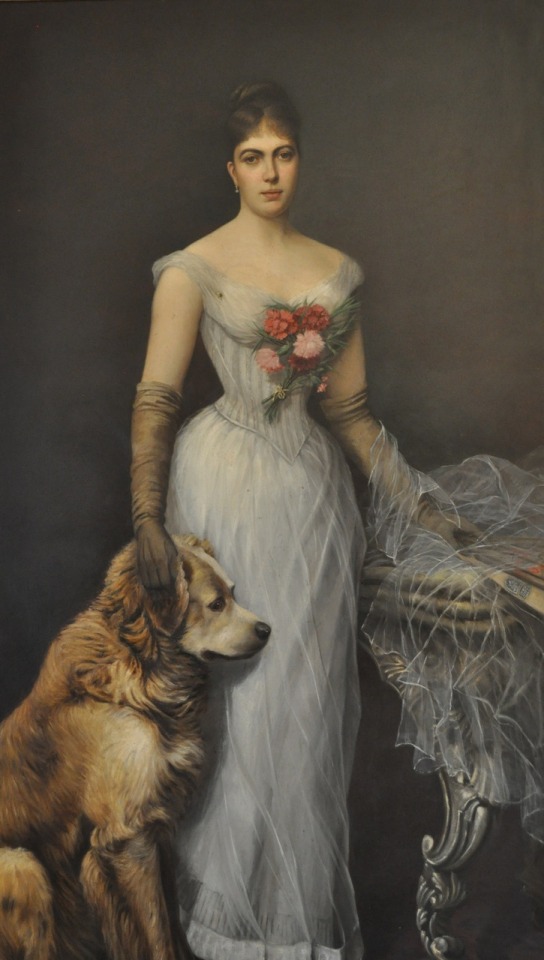
Portrait of a woman with a dog by Lajos Ábrányi, 1891
168 notes
·
View notes
Text
Why Study History? Russia Teaches a Lesson
By Jan van der Crabben
Why should we study history? We all have our personal reasons why we love history; some like reading exciting stories that can be stranger than fiction, others let their imaginations transport them to worlds gone by. There are many reasons for loving history, but in this article I want to explore why history actually matters in the here and now.
Unfortunately, that belief is not universal. Around the world, budgets for social studies and history in particular are cut, and the focus in curricula is shifted to more practical subjects, such as science, technology, engineering and mathematics (STEM) in universities, and English and mathematics in schools.
Yet we have to look no further than the top headlines in current affairs to understand why history is extremely important as Russia’s invasion of Ukraine can only be understood through the lens of history. The primary reason for Russia’s war is neither economic (as wars so often are) nor religious (as wars so often were). No, it is Putin’s belief that Ukraine is the cradle of Russian civilization and should not be an independent country… especially not one that aligns itself with Europe. We know very well now that apart from dynastic lineage, the Kievan Rus had very little relationship to modern Russia. In the thousand years since the Kievan Rus, Ukraine has been at the crossroads of Poland-Lithuania, Austria-Hungary and Russia.
In the lead-up to the war, Vladimir Putin published a long and somewhat rambling historical essay where he places Russia in direct opposition to its western neighbours (who he blames for estranging Ukraine from Russia). The historian Serhii Ploky wrote that “the Soviet Union was created in 1922-1923 as a pseudo-federal rather than a unitary state precisely in order to accommodate Ukraine and Georgia, the two most independent-minded republics.” Ukraine’s independence has been a thorn in the Russian leaders’ side for a long time, but at the start of the Soviet Union, Lenin sided with the Ukrainians while Stalin was against it but went along anyway. Ukraine’s unique cultural mix was accepted as independent during Soviet times, and by the fall of the USSR, 90% of Ukrainians supported independence. Putin wants to wind back the clock to imperial times, fully incorporating Ukraine (and other regions) into a unified Russia. According to Ukrainian journalist Veronika Melkozerova, many Russians share this view.
Russia’s claim to Kiev is not a new one. The Russian Imperial historian Vasiliy Klyuchevskiy already wrote in 1908 that “the Russian state was formed by the activities of Askold and later Oleg in Kiev.” He refers to the Kievan Rus, after which Russia is named, whose dynasty lasted from the Norse leader Rurik (r. 862-879) all the way to Ivan IV, first Tsar of Russia (r. 1547-1584, also known as Ivan the Terrible). The medieval Tale of Bygone Years (c. 1113) called Kiev “the mother of all Russian cities” – which should be read Rus-sian, not Russian, to be historically accurate. Putin’s “favourite historian” Ivan Ilyin (1883-1954) was a fascist philosopher who argued for a greater Russia that included Ukraine. Much of Putin’s rambling historical essay is based on Ilyin’s nationalist beliefs, writes historian Timothy Snyder. Putin’s view completely negates hundreds of years of Ukrainian history, where the region was touched by more Western influences.

If culture is a tapestry, then history is the fabric it is made from. National identities are built upon our understanding of history, which is why in most countries, history has been a compulsory subject in school since the 19th century. Recent legislation regarding how the history of slavery is taught in the United States clearly shows that governments still recognize the power of history to control the national narrative. As the current crisis shows, national identity is a powerful force.
According to Russian historian Dina Khapaeva, “the leitmotif of Russian history [is] a steady fascination with the West, coupled with an urge to excel it in order to escape its influence.” When Vladimir the Great converted to Christianity before marrying the Byzantine Princess Anna in 988, he forced his subjects to be baptized by the river Dnieper in Ukraine, which was associated with pagan beliefs. As a newly Christian state, the Rus needed Christian rules: The Ruskaya Pravda, the first Russian code of laws, was most likely written by Byzantine judges and also forced upon the Slavic population. As such, Khapaeva writes, “people perceived culture and civilization [...] as something enforced by foreign rulers.” Later Western reforms by Peter the Great, Catherine the Great, and other rulers were always enforced at great cost to the general population. After the fall of the Soviet Union, the promise of democracy and a free market economy brought a short period of hope and expectation of prosperity which was crushed by economic crisis and political instability. This “idealization of the West therefore intensified the national inferiority complex”, writes Khapaeva: While in 1990 over two thirds of Russians considered themselves European, by 2007 only one third did. In the same 2007 survey conducted by Khapaeva, 80% of Russians believed that the history of their country should only stir feelings of pride. It is easy for a canny authoritarian leader to use all of this to his advantage.
In this context, Ukraine looking westward and aligning itself with the European Union is a major affront to Russia’s identity and Putin’s vision. After all, Putin and Russian nationalists see Kiev as the birthplace of the Russian nation. The current war can be seen as a calculated demonstration of Russia's might and opposition to the West. While this is a risky gamble for Putin (who appears to have underestimated both Ukraine and the West’s response), the historical context gives it a sense of rationality, albeit a false one.
Only through an understanding of history and how it shapes national identities can we begin to comprehend the major events in current affairs. The past is used by politicians to actively construct national identities; it is misused as pretexts for wars; it is abused in misinformation campaigns on social media. History is very much present and it matters for the present, just as much as STEM subjects do, and must be prioritized accordingly in order to shield our democratic culture from such malignant perversions of history.
Sources
Dina Khapaeva in Peter Furtado, Histories of Nations: https://www.amazon.com/dp/0500293007?tag=anciehistoenc-20
Joshua J. Mark, Kievan Rus: https://www.worldhistory.org/Kievan_Rus/
Matthew Lenoe, Fact-checking Putin’s claims that Ukraine and Russia are ‘one people’: https://www.rochester.edu/newscenter/ukraine-history-fact-checking-putin-513812/
Save Ancient Studies Alliance, The Downward Trend: https://www.saveancientstudies.org/the-trend
Serhii Plokhy in Isaac Chotiner, Vladimir Putin’s Revisionist History of Russia and Ukraine: https://www.newyorker.com/news/q-and-a/vladimir-putins-revisionist-history-of-russia-and-ukraine
Timothy Snyder, Putin’s rationale for Ukraine invasion gets the history wrong: https://www.washingtonpost.com/history/2022/02/25/vladimir-great-putin-ukraine/
Veronika Melkozerova, The Western World is in Denial: https://www.theatlantic.com/ideas/archive/2022/03/what-if-world-war-iii-has-already-started/627054/
Vladimir Putin, On the Historical Unity of Russians and Ukrainians: http://en.kremlin.ru/events/president/news/66181

131 notes
·
View notes
Photo



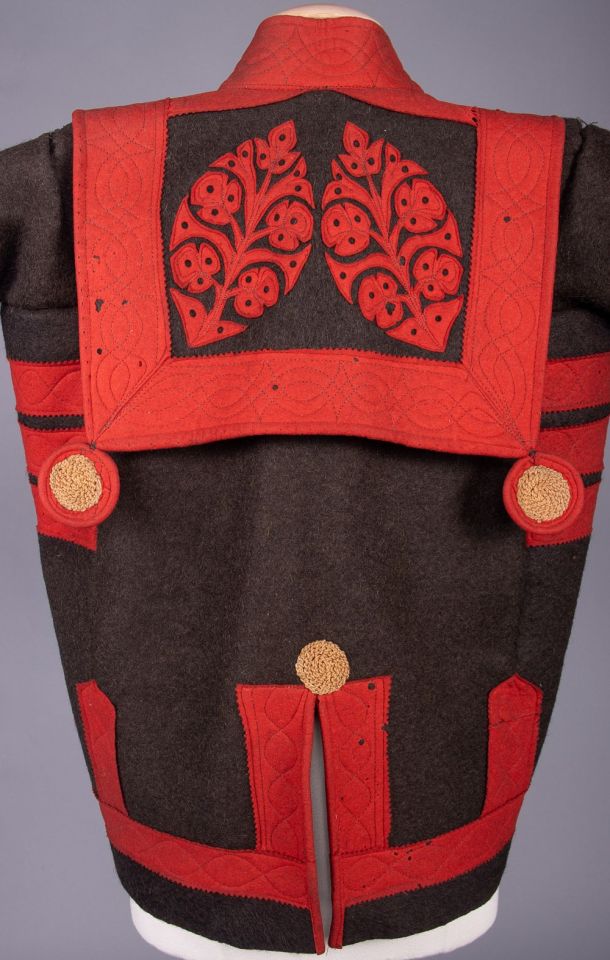
MANS SZUR JACKET, HUNGARY, LATE 19TH C
Natural black & red wool & wool felt w/ cotton cording & leather, printed cotton flannel half lining, machine stitched, CH 46", L 26", (many tiny-0.5" holes in red felt, discoloration, 1" stain front right hem, wear to leather, flower warped,lining worn/discolored, 2" seam opening right armscye & 1.75" left) good.
From the Collection of A.T. Jones & Sons.
source: [Augusta Auctions, Sept 14, 2022 auction]
1 note
·
View note
Text
Events 6.4
1411 – King Charles VI granted a monopoly for the ripening of Roquefort cheese to the people of Roquefort-sur-Soulzon as they had been doing for centuries.
1561 – The steeple of St Paul's, the medieval cathedral of London, is destroyed in a fire caused by lightning and is never rebuilt.
1615 – Siege of Osaka: Forces under Tokugawa Ieyasu take Osaka Castle in Japan.
1745 – Battle of Hohenfriedberg: Frederick the Great's Prussian army decisively defeated an Austrian army under Prince Charles Alexander of Lorraine during the War of the Austrian Succession.
1760 – Great Upheaval: New England planters arrive to claim land in Nova Scotia, Canada, taken from the Acadians.
1783 – The Montgolfier brothers publicly demonstrate their montgolfière (hot air balloon).
1784 – Élisabeth Thible becomes the first woman to fly in an untethered hot air balloon. Her flight covers four kilometres in 45 minutes, and reached 1,500 metres altitude (estimated).
1792 – Captain George Vancouver claims Puget Sound for the Kingdom of Great Britain.
1802 – King Charles Emmanuel IV of Sardinia abdicates his throne in favor of his brother, Victor Emmanuel.
1812 – Following Louisiana's admittance as a U.S. state, the Louisiana Territory is renamed the Missouri Territory.
1825 – General Lafayette, a French officer in the American Revolutionary War, speaks at what would become Lafayette Square, Buffalo, during his visit to the United States.
1855 – Major Henry C. Wayne departs New York aboard the USS Supply to procure camels to establish the U.S. Camel Corps.
1859 – Italian Independence wars: In the Battle of Magenta, the French army, under Louis-Napoleon, defeat the Austrian army.
1862 – American Civil War: Confederate troops evacuate Fort Pillow on the Mississippi River, leaving the way clear for Union troops to take Memphis, Tennessee.
1876 – An express train called the Transcontinental Express arrives in San Francisco, via the First Transcontinental Railroad only 83 hours and 39 minutes after leaving New York City.
1878 – Cyprus Convention: The Ottoman Empire cedes Cyprus to the United Kingdom but retains nominal title.
1896 – Henry Ford completes the Ford Quadricycle, his first gasoline-powered automobile, and gives it a successful test run.
1912 – Massachusetts becomes the first state of the United States to set a minimum wage.
1913 – Emily Davison, a suffragist, runs out in front of King George V's horse at The Derby. She is trampled, never regains consciousness, and dies four days later.
1916 – World War I: Russia opens the Brusilov Offensive with an artillery barrage of Austro-Hungarian lines in Galicia.
1917 – The first Pulitzer Prizes are awarded: Laura E. Richards, Maude H. Elliott, and Florence Hall receive the first Pulitzer for biography (for Julia Ward Howe). Jean Jules Jusserand receives the first Pulitzer for history for his work With Americans of Past and Present Days. Herbert B. Swope receives the first Pulitzer for journalism for his work for the New York World.
1919 – Women's rights: The U.S. Congress approves the 19th Amendment to the United States Constitution, which guarantees suffrage to women, and sends it to the U.S. states for ratification.
1920 – Hungary loses 71% of its territory and 63% of its population when the Treaty of Trianon is signed in Paris.
1928 – The President of the Republic of China, Zhang Zuolin, is assassinated by Japanese agents.
1932 – Marmaduke Grove and other Chilean military officers lead a coup d'état establishing the short-lived Socialist Republic of Chile.
1939 – The Holocaust: The MS St. Louis, a ship carrying 963 German Jewish refugees, is denied permission to land in Florida, in the United States, after already being turned away from Cuba. Forced to return to Europe, more than 200 of its passengers later die in Nazi concentration camps.
1940 – World War II: The Dunkirk evacuation ends: the British Armed Forces completes evacuation of 338,000 troops from Dunkirk in France. To rally the morale of the country, Winston Churchill delivers, only to the House of Commons, his famous "We shall fight on the beaches" speech.
1942 – World War II: The Battle of Midway begins. The Japanese Admiral Chūichi Nagumo orders a strike on Midway Island by much of the Imperial Japanese Navy.
1942 – World War II: Gustaf Mannerheim, the Commander-in-Chief of the Finnish Army, is granted the title of Marshal of Finland by the government on his 75th birthday. On the same day, Adolf Hitler arrive in Finland for a surprise visit to meet Mannerheim.
1943 – A military coup in Argentina ousts Ramón Castillo.
1944 – World War II: A hunter-killer group of the United States Navy captures the German Kriegsmarine submarine U-505: The first time a U.S. Navy vessel had captured an enemy vessel at sea since the 19th century.
1944 – World War II: The United States Fifth Army captures Rome, although much of the German Fourteenth Army is able to withdraw to the north.
1961 – Cold War: In the Vienna summit, the Soviet premier Nikita Khrushchev sparks the Berlin Crisis by threatening to sign a separate peace treaty with East Germany and ending American, British and French access to East Berlin.
1967 – Seventy-two people are killed when a Canadair C-4 Argonaut crashes at Stockport in England.
1970 – Tonga gains independence from the British Empire.
1975 – The Governor of California Jerry Brown signs the California Agricultural Labor Relations Act into law, the first law in the United States giving farmworkers collective bargaining rights.
1977 – JVC introduces its VHS videotape at the Consumer Electronics Show in Chicago. It will eventually prevail against Sony's rival Betamax system in a format war to become the predominant home video medium.
1979 – Flight Lieutenant Jerry Rawlings takes power in Ghana after a military coup in which General Fred Akuffo is overthrown.
1983 – Gordon Kahl, who killed two US Marshals in Medina, North Dakota on February 13, is killed in a shootout in Smithville, Arkansas, along with a local sheriff, after a four-month manhunt.
1986 – Jonathan Pollard pleads guilty to espionage for selling top secret United States military intelligence to Israel.
1988 – Three cars on a train carrying hexogen to Kazakhstan explode in Arzamas, Gorky Oblast, USSR, killing 91 and injuring about 1,500.
1989 – In the 1989 Iranian Supreme Leader election, Ali Khamenei is elected as the new Supreme Leader of Iran after the death and funeral of Ruhollah Khomeini.
1989 – The Tiananmen Square protests are suppressed in Beijing by the People's Liberation Army, with between 241 and 10,000 dead (an unofficial estimate).
1989 – Solidarity's victory in the 1989 Polish legislative election, the first election since the Communist Polish United Workers Party abandoned its monopoly of power. It sparks off the Revolutions of 1989 in Eastern Europe.
1989 – Ufa train disaster: A natural gas explosion near Ufa, Russia, kills 575 as two trains passing each other throw sparks near a leaky pipeline.
1996 – The first flight of Ariane 5 explodes after roughly 37 seconds. It was a Cluster mission.
1998 – Terry Nichols is sentenced to life in prison for his role in the Oklahoma City bombing.
2010 – Falcon 9 Flight 1 is the maiden flight of the SpaceX Falcon 9 rocket, which launches from Cape Canaveral Air Force Station Space Launch Complex 40.
0 notes
Text
My big brain thought of the day while working on this piece (slowly but surely….)
Pruhun fan works usually make Prussia the one pining after Hungary but now I’m like… okay but what about the other way around? I feel like that hasn’t been extensively delved into and now I feel like I have a need to think about it harder…
I feel like Prussia would definitely be more obvious if he were the one to be pining, and Hungary would try to keep it concealed more (although she does have her moments where she just wants to absolutely “attack” that fucking Prussian idiot). Prussia just wouldn’t fucking notice regardless. So it’s centuries of Hungary pining thinking Prussia is too one track minded on creating an empire to really think of her in that way, so she tucks it down deep inside (especially when she marries Austria and needs to start acting “like a lady” and being a “good wife”).
Im kinda up in the air about when I think Hungary would fucking realize that Prussia actually returns the feeling (which, idk I feel like in this universe Prussia would have to be rather fucking occupied with something to not have the chance to realize they have feelings for her. Maybe he likes horses too much idkWAIT NO he was too head over heels for Fritz or something I’m gonna go with that LMAO) and my heart is SCREAMING for 18-19th c. PruHun just bc that aesthetic is so good??? Gives me sexy pride & prejudice vibes idk!!! But realistically I think Hungary would actually attempt to be a good wife for Austria and not cheat on him? (There’s a slip up or two here and there) so I imagine it’s really not until the mid 20th c. that anything would truly happen between them in some form of relationship. However it’s probably not suuuuper healthy of a relationship? Just using each other as a reminder of how things used to be in the world before the mess of the world wars. Under such stress that they just go through a vicious cycle of breaking and making up. That being said, I think they would still try to help each other out behind the iron curtain. Visiting each other when they can. One time they probably attempted to smuggle Gilbert to the west in the trunk of her car. She’s dared him to run across the death zone just to see how long he’d last. He did it. 10 seconds.
#this just turned into me rambling about my personal pruhun timeline.#none of this is historically accurate and I like to keep it that way 😌#let me have my centuries long romances#pruhun#Skye speaks
28 notes
·
View notes
Note
Hello! You made so many nice posts about Hungary's relationship to other hws countries so I was wondering if you had thoughts on Hungary and Lithuania's relationship c: plus I'd love to see Lithuania in your style haha. If not that's cool too though!!
Hello, it’s totally ok! I’m glad you asked! :D I myself isn’t that familiar with Lithuania so it was fun to research Hungary’s and Lithuania’s relationship.
If they ever met in canon, I think they would get along just fine, if not a little awkward. I mean, you surely know that scenario, when your best friend brings a friend you don’t know that well and when you two are left alone, things get a little weird because your middle ground is literally your best friend but without them it’s not the same. That’s kind of the case with Hungary and Lithuania I think, Poland being the mentioned shared friend who is also the reason the two know each other.
And although Hungary and Lithuania rarely meet, when they do, they are curious of each other, asking about how things are going and if they can help each other in any way.

Common History:
Surprise, surprise, Hungary and Lithuania have some common history! Their first encounter is dated back to the Middle Ages, when Hungary joined Poland in making the pagan Lithuania a christian country (there were many battles against Lithuania during the rule of Louis the Great, 1342-1382). There was a struggle about who will obtain Halicz and Volhinia too.
Things turned for the better though when the Lithuanian ruler Jogaila married Jadwiga (she is Hungarian, but ruler of Poland) in 1386. From this moment on many of the Lithuanian nobles visited Hungary to get to know it better. Hungarian nobles and students too, made trips to Lithuania because of cultural, political or religious reasons. Many nobles and soldiers stayed there and became a minority, so Lithuanians of that era had the stereotype that Hungarians are either nobles or soldiers. These Hungarians served the royal court there and moved in high circles most of the time.
The Golden Age of the Polish-Lithuanian Commonwealth is also connected to the Hungarian noble Báthory István who was elected as king. Even more Hungarian soldiers arrived in Lithuania during his rule and stayed there, their offsprings slowly melting into the Lithuanian society.
This clonesess soon came to an end though, and from the 17th century ties have loosened. During the 19th century almost all connections have severed. The two didn’t pick up diplomacy during the World Wars nor after, neither during the Cold War. There wasn’t much interaction, if any at all.
The two decided to refresh their relationship in 1991 though. There is tentative curiosity in both directions nowadays, with many researches trying to find the shared history between the two.
And there are many Hungarian words adapted to Lithuanian too! It was a fun read so thanks for the question! :D
#hetalia#aph#hws#hetalia hungary#hetalia lithuania#hws hungary#hws lithuania#hungarian-lithuanian relations#the friend of my friend is my friend#simple as that#xD#q&a#fanart#zsocca#zsocca55#hungary x country series
180 notes
·
View notes
Text


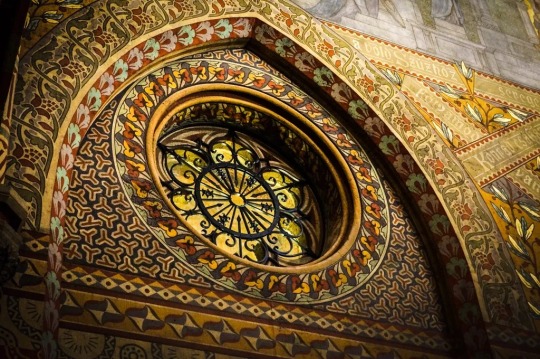

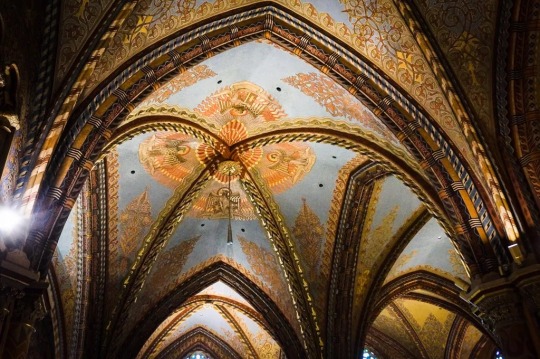


The church of Matías or Our Lady, Budapest,Hungary.
The current building was built in the late Gothic style in the second half of the c.15th and was restored in the c.19th The architect responsible for this work was Frigyes Schulek.
344 notes
·
View notes
Photo
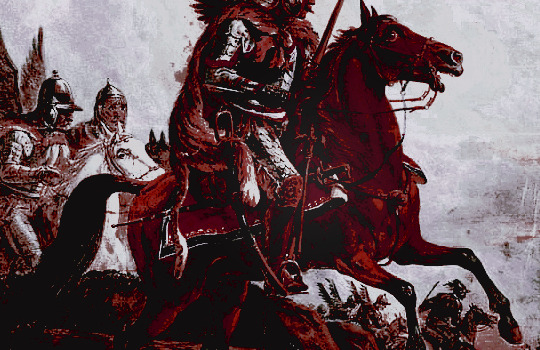
HEADCANON ; DO NOT REBLOG.
armor in the 15th century had evolved beyond individual pieces of metal plate, becoming what we know today as full plate. the shoulder pieces, called pauldrons, would be a singular sheet that wrapped around the arm and overlapped another on the bicep to give the arm flexibility, usually shifting down into the elbow couters. they had very strong gauntlets with broad overlapping plates that shot upward from the knuckles and down the arm to the elbow, where the joint would be wrapped with leather beneath the couter. the chest piece would also be whole, but made of many pieces with a sliding rivet for the sake of mobility, and would usually have overlapping pieces beneath it.
the count was part of the bl*ck army, serving as a warlord under the service of mathias c*rvinus in the later part of the war, after they (the citizens he presided over) had become more pressed under the thumb of the king corvinus later deposed. ( keep in mind, this did not stop the monarchy from forcibly relocating poor / non-magyar folks into the transylvanian basin, nor stop the hussar from looting/raids ) what this means for his armor is that, as the name of the army suggests, the plate and leather of the soldiers were dyed seamlessly black. this was true save for the pelts he wore, which were often sewn together out of foxes and badgers he’d hunted himself, or the occasional wolf, which were vibrant against the plate. even the barding of his mare was black on her sorel coat, with a stark, blue feather sticking out from the leather straps on the chanfron. his horse also had an escutcheon, in which two small horns were placed to give it the appearance of a zmeu.
when it comes to blades, he had an extremely selective taste. he favored mobility, yes, but also the ability to use brute strength against his opponents. for this fact he favored the bastard sword in close combat, and at times the zweihander if he had the opportunity to use it. the lord’s height, coupled with the extreme reach of long blades made for an incredibly powerful weapon with a ton of force behind the swing. for these weapons, he preferred them well baanced - to have a long hilt with a very narrow blade, oftentimes kris above the pommel, with a sharp edge and very acute point.
as was customary when hunting, he carried a variety of knives on his person. more than the hunting dagger in the laces of his boots. he carried a short blade known as a hunting sword that measured from the very tips of his fingers to the start of his inner elbow. it was ornate, but well-weighted and used exclusively while hunting game. the blade would be very sharp at the tip and more dull toward the pommel. this would be a well-worn blade, with obvious marks from being sharpened by a stone. he enjoyed hunting and tracking on his own, and enjoyed the quiet it brought him.
on that note (hunting) comes the mention of his matchlock arquebus collection. one of which is quite small. it was created as a hand-cannon in 1411, and it ignites by matchlock on the primer so that the propellant/pellet can be ignited and shot forward. it was used in substantial number by the bl*ck army of hungary, with sources siting that it was wielded by one in four soldiers and one in five when accounting for the entire army. vladislav also had a smaller version from further east, called a pischal, which were used primarily by troobs on horseback - or pischal'niki.
of course, there were longer versions of this handgun, which were much more like a rifle. these he tended to use when hunting larger game, like wolves or bears. it would be held or brought over the shoulder, and on each form the trigger came in the form of a serpent-like hook beneath the long barrel of the gun. with these the human-vladislav’s aim was deadly, and he was well-acquainted with the issues in accuracy that came from the distance between barrel and propellant. it required the user to carry with him long match twine that would be used to light the black powder that was loaded int the chamber. said black powder would hang from vladislav’s waist along his belt. the recoil was fierce.
he cared for his weapons constantly, and normally sacrificed a full day of his week to dedicate solely to cleaning them himself, as he trusted no one else to handle them. he had a menagerie of weapons at his disposal in the family Armory, some of which dated back hundreds of years before his conception. these would eventually be passed down to his uncle’s children - the children of valerious - and were ironically the very same ones used to hunt him into the 19th century. in his arsenal were flails, longswords, falcata, crossbows and other artifacts, like special daggers or silver stakes used to hunt and kill strigoi terrorizing the village. they of course had corsques, shields, halberds, glaives, corsata, crossguarded blades and archery equipment as well. most belonged to deceased relatives, and each had a story.
last but not least is the kijil; popularized by the ottoman empire across all of eastern europe. it is a blade that resembles a moderately curved scimitar, but is the size of a long dagger. it became widely used within the balkan states and eurasian steppes, and was popular in the cavalry. vladislav received his within the militia and it, like for so many other soldiers, became part of his daily wardrobe. he wore it often along with the black kaftan he’d been gifted by his lithuanian mother, and sheathed it in a decorative, gold casing to hang above his waist on his right side as he is left-hand-dominate ambidextrous.
#♔. ˋ like a drowning in the heart like falling endlessly from the skin to the soul . ˊ headcanon/meta.#rewrote this cause i wasnt happy with it#i am now#guns tw#weapons tw
5 notes
·
View notes
Text

Portrait of Baroness László Majthényi by Édouard Boutibonne, 1862
302 notes
·
View notes
Photo

Budapest. Mátyás templom (XIII-XIX. sz.)
Mattiaskirche (XIII-XIX. Jh.)
Mattias Church (13-19th c.)
Будапешт. Храм Матиаша (XIII-XIX вв.)
Hungary
36 notes
·
View notes
Text
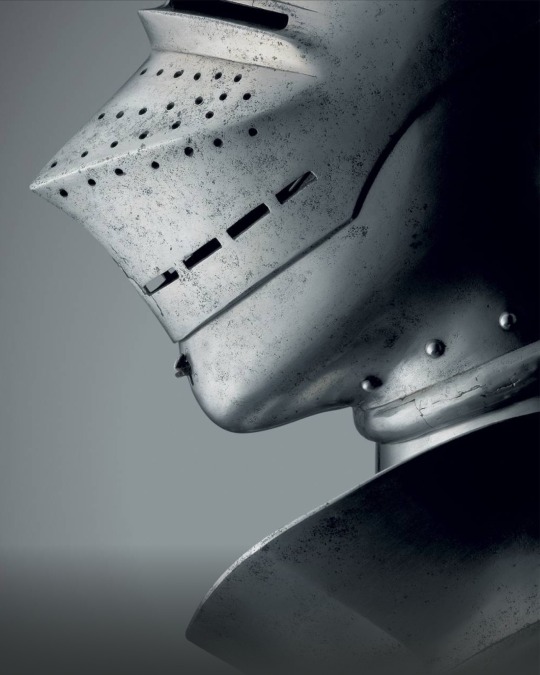
Full armour.
Unknown Artist / Maker.
Date: c. 1500- 1510, Germany.
Medium: Medium-carbon steel, quenched and tempered, etched.
Weight: 19.56 kg, total weight.
Inv: A22.
The Wallace Collection.
This is one of those rare armours. Apart from the greaves and sabatons and some pieces of the gauntlets, which are 19th-century restorations, the rest of the armour is complete and homogeneous. It is also in remarkably good condition. It is a field armour, for war rather than jousts or tournaments, representing very well the kind of armour worn by knights and men-at-arms during the Italian Wars, especially the second, third and fourth (1499-1526), and in conflicts between the Renaissance rulers of Eastern Europe and the Ottoman Empire.
From even a short distance away, this armour looks very plain and undecorated, with its remarkable presence stemming from its smooth, rounded, polished surfaces and elegant proportions. Looking closer however, the breast and backplates are shown to be decorated with fine etched ornament. Twisting, budding rose-vines on the sides of the breastplate frame a crowned W monogram, a hand pointing to the mongram, a scroll carrying the acronym DIDME or GIGME (the letter G is sometimes reversed in German inscriptions of this period), and an invocation of the name of Jesus, in Latin. This group of images and inscriptions is repeated on the backplate, which instead of rose-vines has a narrower recessed band containing scrolling foliage.
The W monogram almost certainly belongs to Wladilaus II (also Vladilaus, Ladislaus, Vladislav, Ulászló), King of Bohemia (1471-), Hungary and Croatia (1490-) (1456-1516). This does not mean that this armour belonged to the King himself- it is not nearly rich enough for someone of royal status. More likely the armour was made for a lord or knight in the service of the King. The W monogram was used very widely during Wladilaus’ reign, and many examples of it survive today on 16th-century architecture remaining in Prague, the former capital of Bohemia.
14 notes
·
View notes
Text
Really the impression I get from Rady’s description of late 19th/early 20th C Austria-Hungary is really reminiscent of what I remember of Yurchak’s portrayal of the late Soviet Union - still full of grand processions and legitimizing spectacles, but no one really takes them seriously A state without anything to justify it, held together by inertia and graft and the fact that it seems eternal, or at least that it’s existence is more convenient than the alternatives to everyone involved.
Which is a formula that seems to work quite well right up until it doesn’t.
7 notes
·
View notes
Text
I love my baby brain signing up for 19th c euro
“Oh I’ll finally get to learn about Hungary!”
Nope. It’s all France. It will only ever be France.
#this is satire but we spent 6 weeks on France so it feels like it’s true#rev speaks about her history class
9 notes
·
View notes
Note
Hi, I just wanted to let you know that I really appreciate your social and cultural historiography. While I'm familiar with English and French Monasticism from 1300 onward, my focus was on clerical life and theology having contemporaneous context is really helpful. Your explanations are also clear and funny, which I appreciate as well. I haven't gotten too far into your studies yet but do you have any knowledge of European Muslims outside of the O.E.?
Aha, I am afraid I don’t actually know what you mean by “outside of the O.E.” (this is on me for not being a Cool Kid, no doubt, but there you have it). However, if you mean Muslims in medieval Europe, medieval Europe’s perception of/interaction with Muslims, how this changed in the late medieval/early modern period, and where these sites of contact were most likely to happen: yes, I absolutely have all of that! (Edit: @codenamefinlandia kindly suggested that this might mean outside the Ottoman Empire, which I doubtless should have thought of, but I hope this is indeed what you mean? In which case, yes, the below resources will be very helpful for you in exploring the European Muslim presence well before the Ottomans.)
I wrote briefly about Muslims in my Historical People of Color in Europe post, including in the context of the crusades, their long-term settlements in medieval Spain and Italy, and the relationships of the Muslim empires with Elizabethan England. There are, as you might expect, many studies focusing on Muslim-Christian contacts in medieval Europe and in the wider medieval world, of which the crusades are probably the best-known example. Below follows a selection of some reading material which might be helpful:
Sea of the Caliphs: The Mediterranean in the Medieval Islamic World by Christophe Picard (this is about medieval Islamic trade in the Mediterranean, as it says on the tin, starting in the 7th century with the original Muslim conquests, and focuses on its role in cultural contacts between Muslims and Christians of southern and eastern Europe)
The Arab Influence in Medieval Europe, ed. Dionisius A. Agios and Richard Hitchcock (a collection of essays about Arabic influence on medieval Europe, this one doesn’t have any e-version so you might need to consult a university library)
The Muslims of Medieval Italy by Alex Metcalfe (examines the rise and fall of the Islamic presence in southern Italy and Sicily between about 800--1300, and how this was transformed into a frontier of cultural contact, exchange, and conflict alike)
Idols in the East: European Representations of Islam and the Orient, 1100--1450, by Suzanne Conklin Akbari (examines how the Islamic world was depicted in the ‘high’ medieval era, and the developments of some of these Orientalist images in the 19th century and onward)
Sons of Ishmael: Muslims through European Eyes in the Middle Ages by John V. Tolan (in something of the same vein as the above; he has written another book called Saracens: Islam in the Medieval European Imagination which focuses more on the semiotic, literary, and narrative construction of the “othered Muslim”).
Muslim and Christian Contact in the Middle Ages: A Reader, ed. Jarbel Rodriguez (a GREAT book with multiple types of examples, primary sources, regions, and types of contact between Muslims and Christians from the seventh through the fifteenth century, including Byzantine, Jewish, Muslim, and Christian authors of the time period)
Muslims of Medieval Latin Christendom, c. 1050--1614, by Brian Catlos (another book which I really need to read more of, focusing on medieval Muslims who actually lived IN Europe, including in Spain, Italy, Hungary, the Balkans/Eastern Europe, and other places).
The Republic of Arabic Letters: Islam and the European Enlightenment, by Alexander Bevilacqua (studies how the study/approach to Islam changed i the seventeenth and eighteenth centuries, and how many Enlightenment scholars learned Arabic and read Islamic texts)
As Catlos says in Muslims of Medieval Latin Christendom: “In fact, the Muslims of medieval Europe included substantial communities scattered right across the Latin-dominated Mediterranean, from the Atlantic coast to the Transjordan, as well as in Central and Eastern Europe. In some areas they survived for only a century or two, whereas in others they persevered for well over five hundred years. They did not live as isolated enclaves, they were not uniformly poor, and were not necessarily subject to systematic repression; rather, they comprised diverse communities and dynamic societies that played an important role in the formation of what would eventually emerge a modern European culture and society.” In other words, while we’ve discussed before that medieval Europe was never uniformly white and never uniformly Christian, people tend to think that Jews were the only other religion that lived permanently in Europe. While Italy, Iberia, and the Balkans maintained the most enduring Muslim communities, that was not the only place they lived, and they were not merely merchants passing through without settling (though there was plenty of interreligious trade). We’ve discussed before how Yusuf/Joe would not necessarily always be a surprising or unexpected sight in Europe, and how people there would be a lot more used to him than you might expect. So: yes, Islam was always embedded in the fabric of medieval Europe, both as enemies during the crusades and as long-term citizens and communities at home.
Bonus: have some work on queer medieval and early modern Muslims, because reasons!
Sahar Amer, ‘Medieval Arab Lesbians and Lesbian-like Women’, Journal of the History of Sexuality, 18 (2009), 215-236
Sahar Amer, Crossing Borders: Love between Women in Medieval French and Arabic Literatures (Philadelphia: University of Pennsylvania Press, 2008)
Samar Habib, Arabo-Islamic Texts on Female Homosexuality, 850--1780 A.D. (Teneo Press, 2009)
Samar Habib, Female Homosexuality in the Middle East: Histories and Representations (London: Routledge, 2007)
Samar Habib, Islam and Homosexuality (Praeger, 2010)
E. J. Hernández Peña, ‘Reclaiming Alterity: Strangeness and the Queering of Islam in Medieval and Early Modern Spain’, Theology & Sexuality, 22 (2016) 42-56
Gregory S. Hutcheson, ‘The Sodomitic Moor: Queerness in the Narrative of Reconquista’, in Queering the Middle Ages, ed. by Glen Burger and Steven F. Kruger (Minneapolis: University of Minnesota Press, 2001), pp. 99-122.
Gregory S. Hutcheson et al., eds., Queer Iberia: Sexualities, Cultures, and Crossings from the Middle Ages to the Renaissance (Durham, NC: Duke University Press, 1999)
Scott Alan Kugle, Homosexuality in Islam: Critical Reflections on Gay, Lesbian, and Transgender Muslims (Oneworld Publications, 2010)
Stephen O. Murray and Will Roscoe, Islamic Homosexualities: Culture, History, and Literature (New York: New York University Press, 1997)
Anyway. Let me know if you want me to expand on any of these topics in more detail, and I hope some of these resources are helpful!
#history#medieval history#queer history#also#the old guard meta#for reference#a-little-bit-of-ultra-violence#ask
92 notes
·
View notes
Text
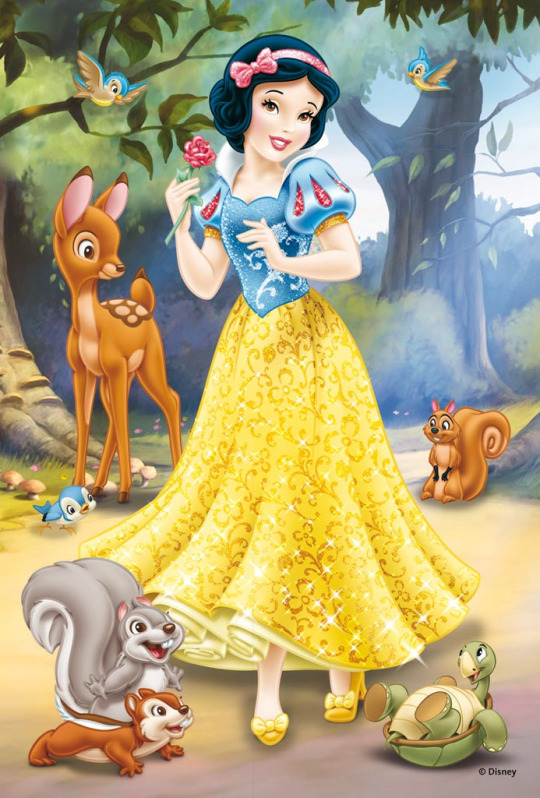
Snow White or in German, Schneewitchen
POB: Kingdom of Bavaria, Germany 1868.
DOB: 1854
Evidence:
Exhibit A: Doc asks if Snow White can make apple dumplings which is a 18th century dish. She can also make plum pudding also known as Christmas pudding.
Exhibit B: Snow White’s hair bow. Hair bows originated from the 17th century and were used in wigs during the 17th and 18th century. That, and it’s an Alice band which came out some time in 1865 after Alice in Wonderland was published.
Exhibit C: Queen Grimhilde’s balaclava. The balaclava is named after the Battle of Balaclava from the Crimean War in 1854, the time when the Brothers Grimm completed the final revision of Snow White.
Exhibit D: Prince Florian’s feathered beret. Berets are an ancient type of hat but they were very popular in the 19th century and beyond.
Exhibit E: Snow White’s court shoes or pumps are very 17th century and the buckles had bows attached to them in the 19th century.
Exhibit F: There is a three-dimensional cuckoo clock with a frog coming out of it. Stuff like that wasn’t popularized for cuckoo clocks until 1860. One example is the 1861 Hunt piece design.
Exhibit G: Queen Grimhilde uses a Bunsen burner. Gas technology didn’t come about until 1852.
Exhibit H: Dopey uses a dustpan to sweep up the diamonds. The first dustpan, made from metal like in the movie, came out in the 1850s.
Fact 1: Although bob hairstyles didn’t technically exist back then, Snow White was 14 years old in the movie, so her hair was allowed to be short during that time because it was obviously naturally short but it could be curled up just like the long hair on girls.
Fact 2: Snow White has puffed sleeves with teardrop-shaped slashing designs on them, very popular in Tudor times. And the drops are red to symbolize the three drops of blood from Snow White’s mother the First Queen.
Fact 3: Humbert the Huntsman wears a bycocket which was very fashionable for hunters in the 13th to 16th century. They fell out of fashion in England, France, and Spain but were still worn in the Netherlands by merchants, in the Low Countries by Masters of the Guild, and by nobility as far as Hungary.
Fact 4: The Dwarf’s Cottage is located “over the seven jeweled hills and beyond the seventh fall” according to the Spirit of the Magic Mirror. The Seven Hills of Bamberg are near the Black Forest in which the seventh fall known as the Triberg Waterfalls is located.
Additional Information:
Despite Snow White being 14, Prince Florian is not a pedophile. When it came to marriage, the couple had to strictly be teenagers. Sometimes, the boys present at the birth of a daughter were 3 to 4 years older than the baby princess. So, Florian had to be at least 17 to 18 years old.
Also, there is evidence that Snow White met Florian long before they saw each other at the well. In the song, “I’m Wishing,” she clearly says, “I’m wishing for the one I love to find me today.” She could’ve said, “I’m wishing for someone to love.” Instead, she said, “I’m wishing for the one I love.” Past tense. This was never love at first sight. She loved Florian long before the well scene and only ran away from him because she was embarrassed. She thought he would laugh at her for wearing the rags Grimhilde made her wear as evidenced when she brushes them off after running away and hiding.
Also, Snow White isn’t the fairest of them all because of her physical beauty but because of her pure heart as evidenced when the Spirit of Magic Mirror says, “Rags cannot hide her gentle grace.” So, she’s beautiful on the inside because she’s really nice and considerate unlike Grimhilde who’s vain, coldhearted and evil.
Given the opportunity, the Queen would easily kill Snow White. But as a Queen, she has an image to protect and is aware that the citizens like Snow White more than her and the citizens know that the Queen is evil, so, if the Queen did murder Snow White, she would have the entirety of the kingdom on her tail, especially considering that Snow White is her stepdaughter. That was why she needed someone else to do the job for her. But when that fails, she decides to take it upon herself to kill her but knowing that she has an image to protect, she has to disguise herself so completely that no one would ever suspect. Her transformation into an old Hag worked but it also made her senile. The ingredients used to make the potion which were written in English for translation purposes by Disney, were:
1. Mummy Dust or Mummia to make her old.
3. Black of Night or Nightshade to shroud her clothes.
4. Old Hag’s Cackle or a mixture of dumbcane to irritate the voice and propolis to relax it and give it the orange color. Both age the voice.
5. Scream of Fright or a combination of rhubarb juice to give it a good taste, hydrogen peroxide, and ammonia to whiten the hair.
6. Wind to fan the drink’s heat.
7. A thunderbolt to conjoin the particles in the drink and mix it altogether.
In her senile state, she decided to use a special sort of death for Snow White. The poisoned apple that would put Snow White into a state of suspended animation.
Ingredients were:
Belladonna to cause delirium and hallucinations.
Henbane as an anesthetic potion, as well as for its psychoactive properties in "magic brews." These psychoactive properties include visual hallucinations and a sensation of flight. Common effects of ingestion of henbane in humans include hallucinations, dilated pupils, restlessness, and flushed skin. If you mix belladonna and henbane together, you have a very powerful anesthetic potion.
Aconite which causes asphyxiation and would've killed her but it would've made it painless and would've calmed her.
Jimson Weed would be added to the anesthetic potion, as it causes hallucinations. So, instead of dying, she would've been put to sleep because there are too many anesthetics in the brew. Of course, you wouldn't call it sleep, because it is a sleep in which there is no air. Like the Queen disguised as the old peddler woman said, when Snow White eats the apple, her breath will still, and her blood will congeal. So, the aconite would not only stop her breathing but it would cause her blood to clot excessively since the blood has oxygen in it, too. Of course, Snow White didn't die from it. All the ingredients I've mentioned would only put her in a state of suspended animation.
White Snakeroot is non-toxic unless in the milk of cattle. It is used for curing ague, diarrhea, kidney stones, and fever. It can also be used to revive unconscious people. It, of course, was added as a way for the real antidote, Love's First Kiss, to take affect and that antidote's power lies in the apple itself. Throughout history, the apple has been a symbol for love and sexuality, which is why Love's First Kiss woke her up. Apples are full of Vitamin C and promote strong bones and blood sugar regulation. It is also full of flavonoids and antioxidants that neutralize harmful free radicals.
The antidote in the Evil Queen’s senile old mind does not bother her because she believed the Dwarfs, thinking Snow White was dead, would bury her alive.
She goes to Snow White in her old hag form knowing that Snow White’s kindness towards others and inability to be deceived by appearances since beauty is found within would be easy to prey upon.
That and she’s also Christian as seen when she prays to God to “bless the seven little men who were so kind to her.” That Christianity plays a big role in the poisoned apple scene. It’s understandable, not just because she’s 14 and children are easier to take advantage of than adults but because of a Bible scripture that she may have heard of and took to heart.
Hebrews 13: 2 states, “Do not neglect to show hospitality to strangers, for by doing so, some have shown hospitality to angels without even knowing it.”
Of course, we see that Snow White is clearly creeped out by the old woman as she backs away from her advances. So, she might’ve eaten the apple just to humor her so that she’d leave her alone. So, she was just being polite.
Now, contrary to what people believe, Prince Florian is not a necrophiliac. The kiss was a goodbye kiss. He was mourning for her.
I know that Snow White wouldn’t be rated G if it were made in present day.
We have scary images from when Snow White is in the Black Forest and the comeuppance of the Evil Queen.
But it was the first animated feature-length film and if it had flopped, Walt Disney would’ve lost everything. He wanted it to be timeless and he made it so.
#disney princess#snow white#historical accuracy#analysis#character info#snow white and the seven dwarfs
23 notes
·
View notes